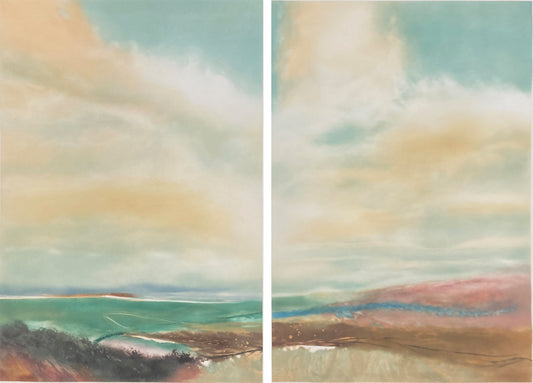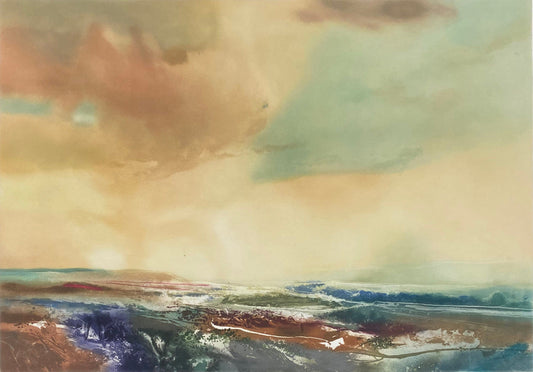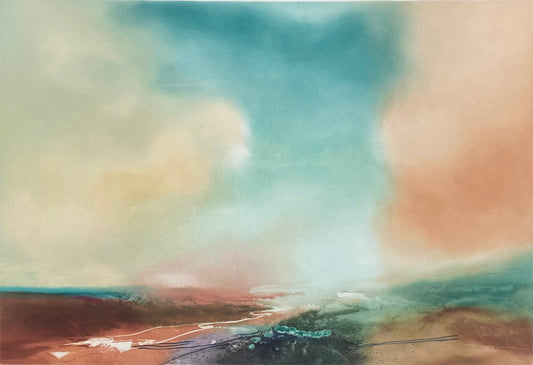John Maxon
-
Voyage diptych
Vendor:John MaxonRegular price $1,750.00 CADRegular priceUnit price / per -
Violet Splendor
Vendor:John MaxonRegular price $1,120.00 CADRegular priceUnit price / per
-
John Maxon
-
Coming from a very western tradition in Wyoming, John Maxon developed an expansive view of nature and the spiritual essence it imbued. Moving eventually to the San Francisco Bay area, John’s delight in the effects of light and color led him to the decision to become an artist at the young age of 15. His natural ability was encouraged, and at 16 he began figurative art classes with Howard Brodie, the artist well know for his WWII correspondence, drawings and the Watergate trial drawings.
Maxon spent his youthful days painting seriously in the fields behind Stanford University, and was fortunate to be exposed to and to study the works of Nathan Oliviera, Wayne Thiebaud and David Park during those years. He attended San Jose State University, and apprenticed for Sam Richardson and John Battenberg, primarily learning sculpture techniques. It was here that he first witnessed the actual workings of the art world. These great artists, the school of painting, and the movement that was happening in the San Francisco Bay area during the late 60s and early 70s were strong influences to John, and his work began to reflect the style and perceptions of this period.
With Roy DeForest, William T. Wiley, and Wayne Thiebaud in graduate school at the University of California, Davis, John explored many variations of techniques and styles. The exposure to these highly successful, professional, famous artists of that period gave John a stronger awareness of the degree of dedication and strength required to make painting a career. It was during this time that John knew that his sole profession would be as an artist, as aside from teaching art occasionally, this has remained true.
The following eight years were spent perfecting his techniques and co-founding Mount Madonna Center for Creative Arts & Sciences, a successful alternative private school in the mountains above Santa Cruz, California. He exhibited in the Bay Area sporadically, but it was not until the early 80s that he began to show his work on a much more serious and wider format. Capturing the eye of many well known corporate and private collectors, his abstract landscapes conveyed a sense of spirit, offering a unique perspective on the patterns and contours of the Earth. His manner is free-flowing, and this is reflected in his paintings.
A brief move to Santa Fe, New Mexico in the early 90s expanded John’s vision and palette once again. The influence of the dramatic light, shapes, and other local artists enabled him to put together a body of work that resonated the spectacular essence of this territory. Carrying this inspiration back to California, John began to explore the beauty of the landscape and its relationship to figures interacting within it. Settling in the heart of the Napa Valley for four years, John continued to experiment with the naturalness of man and woman working within their surroundings as well as the cultivated beauty of that area.
The variation of composition in his extraordinary works demonstrates his ability to handle all forms of medium. “Paint the struggle. Paint the joy. Above all, paint the Truth.” John strives to represent these human inevitabilities through his art. It is his desire to attempt to paint the great beauty that is around us always and to share his own personal joy in the expression of color. The themes of landscapes, and people and animals within the landscape are simply an homage, and effort to create an awareness of the process that is involved in the joy of living. “As the days progress, I certainly feel very blessed and inspired.” It is this inspiration, which he shares with us, that has made John Maxon such a unique and successful artist.
John is currently an adjunct professor of art at Cabrillo College in Aptos, California, where he continues his painting career.





